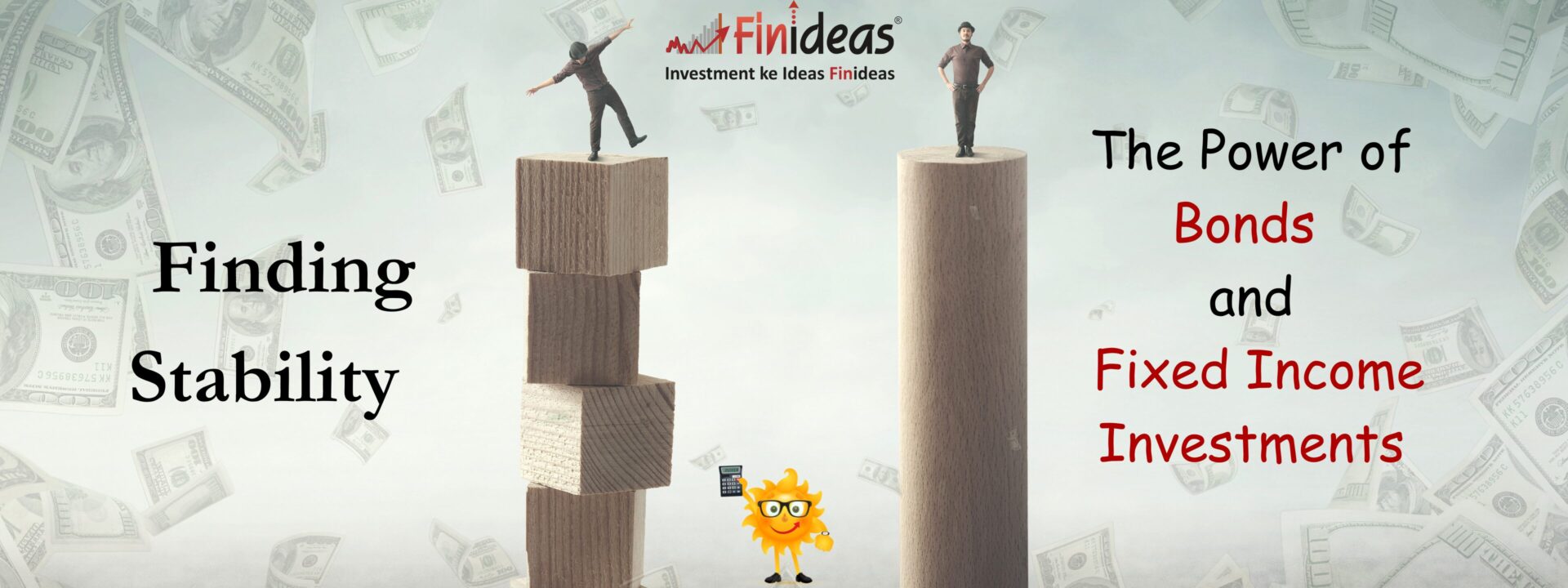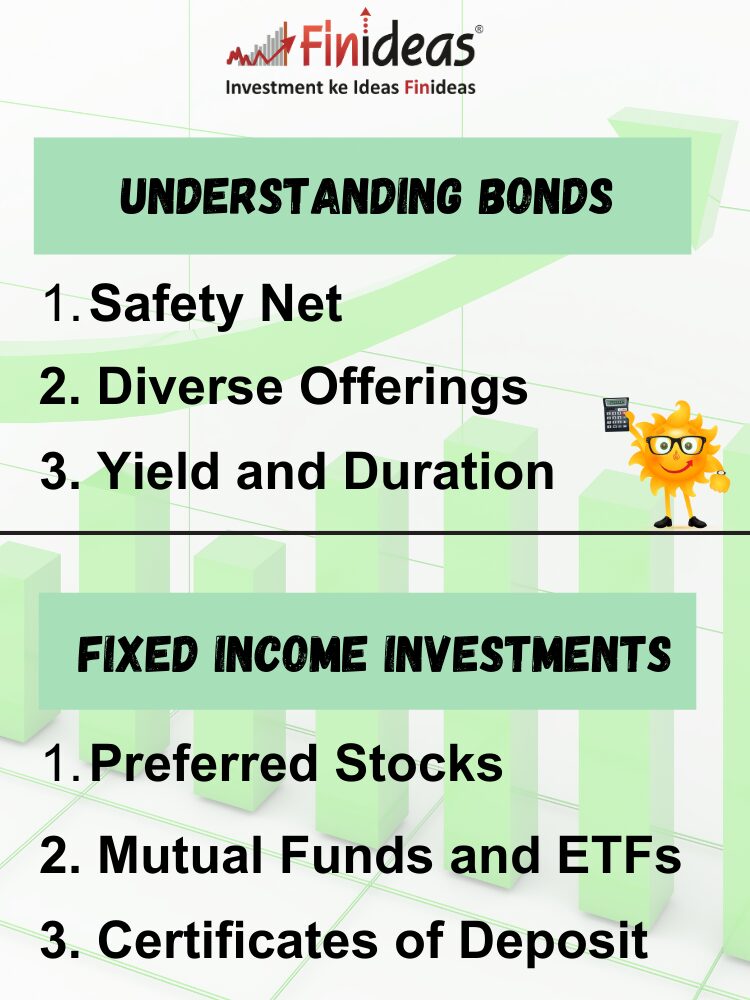Finding Stability The Power of Bonds & Fixed Income Investments
In the world of investing, things can be pretty wild and unpredictable, like a rollercoaster. But there’s a calm and peaceful spot called bonds and fixed income investments. While stocks get a lot of attention for their exciting highs and scary lows, bonds are like the quiet heroes. They offer stability and a steady flow of money for people who invest in them. So, let’s take a closer look at what makes these investments special and how they work.
Understanding Bonds: The Pillars of Stability
At its core, a bond represents a loan made by an investor to a borrower, typically a corporation or government entity. In return, the borrower promises to pay back the loan amount, known as the principal, along with periodic interest payments, referred to as coupon payments, until the bond matures.
Safety Net:
Bonds are renowned for their stability and preservation of capital. Unlike stocks, which can experience wild price swings, bonds offer a predictable stream of income and a defined repayment schedule, making them a favored choice for risk-averse investors.
Diverse Offerings:
Bonds come in various forms, catering to different risk appetites and investment objectives. From government bonds issued by sovereign nations to corporate bonds issued by companies seeking capital, investors can choose from an array of options to suit their preferences.
Yield and Duration:
The yield on a bond reflects the annual return an investor can expect based on its price and coupon payments. Duration measures a bond’s sensitivity to interest rate changes, helping investors gauge the potential impact of fluctuations in interest rates on their investment.
Fixed Income Investments: Building Wealth Brick by Brick
Fixed income investments encompass a broader spectrum of financial instruments beyond traditional bonds. These may include:
Certificates of Deposit (CDs):
CDs are time deposits offered by banks with fixed interest rates and maturity dates. They provide a safe haven for investors seeking steady returns without exposing their capital to market risks.
Preferred Stocks:
Preferred stocks combine features of both bonds and common stocks, offering a fixed dividend payment like bonds while also providing potential for capital appreciation like stocks. They are often favored by income-oriented investors seeking higher yields.
Mutual Funds and ETFs:
For investors seeking diversification and professional management, bond mutual funds and exchange-traded funds (ETFs) offer a convenient way to access a portfolio of bonds across different sectors and credit qualities.
The Compelling Case for Bonds and Fixed Income Investments
Steady Income Stream:
Bonds and fixed income investments serve as a reliable source of income, making them particularly appealing for retirees and conservative investors seeking to meet their living expenses.
Portfolio Diversification:
By adding bonds to a portfolio dominated by stocks, investors can reduce overall volatility and enhance risk-adjusted returns. This diversification benefit becomes especially pronounced during periods of market turbulence.
If you are interested in investing in bonds along with the equity, then you should have a look at INDEX LONG TERM STRATEGY.
Capital Preservation:
In uncertain economic environments or during market downturns, bonds act as a cushion, helping investors preserve their capital and navigate through turbulent times with greater resilience.
Conclusion
While the allure of high-flying stocks may be tempting, the reliability and peace of mind offered by bonds and fixed income investments serve as a cornerstone for long-term financial success. Whether you’re a seasoned investor looking to mitigate risk or a newcomer seeking to build a solid financial foundation, these instruments provide invaluable benefits that should not be overlooked.
Have you considered incorporating bonds or other fixed income investments into your investment portfolio? If so, what factors influenced your decision, and if not, what barriers or concerns do you have about including them?
Happy Investing!
This article is for education purpose only. Kindly consult with your financial advisor before doing any kind of investment.


